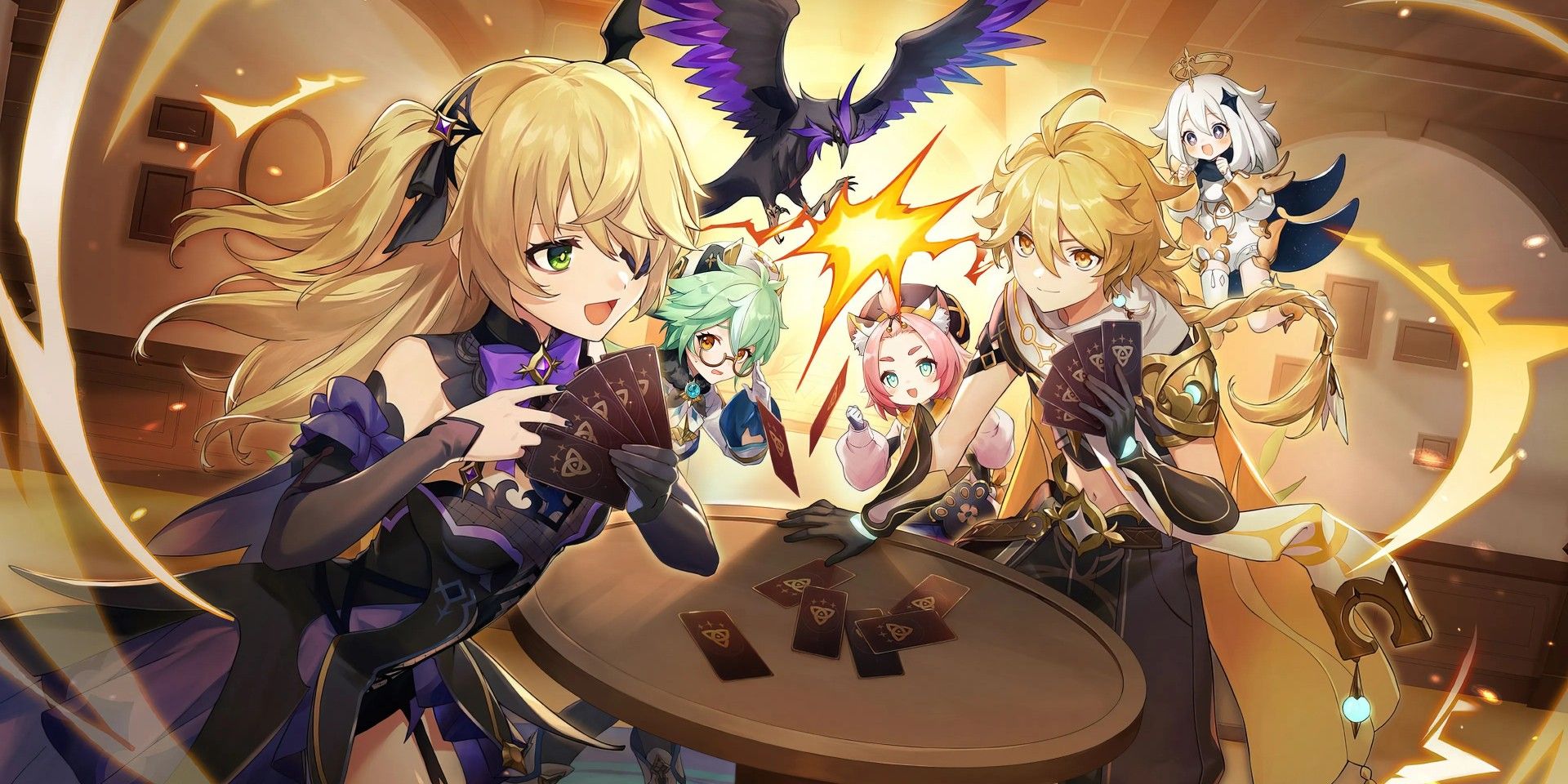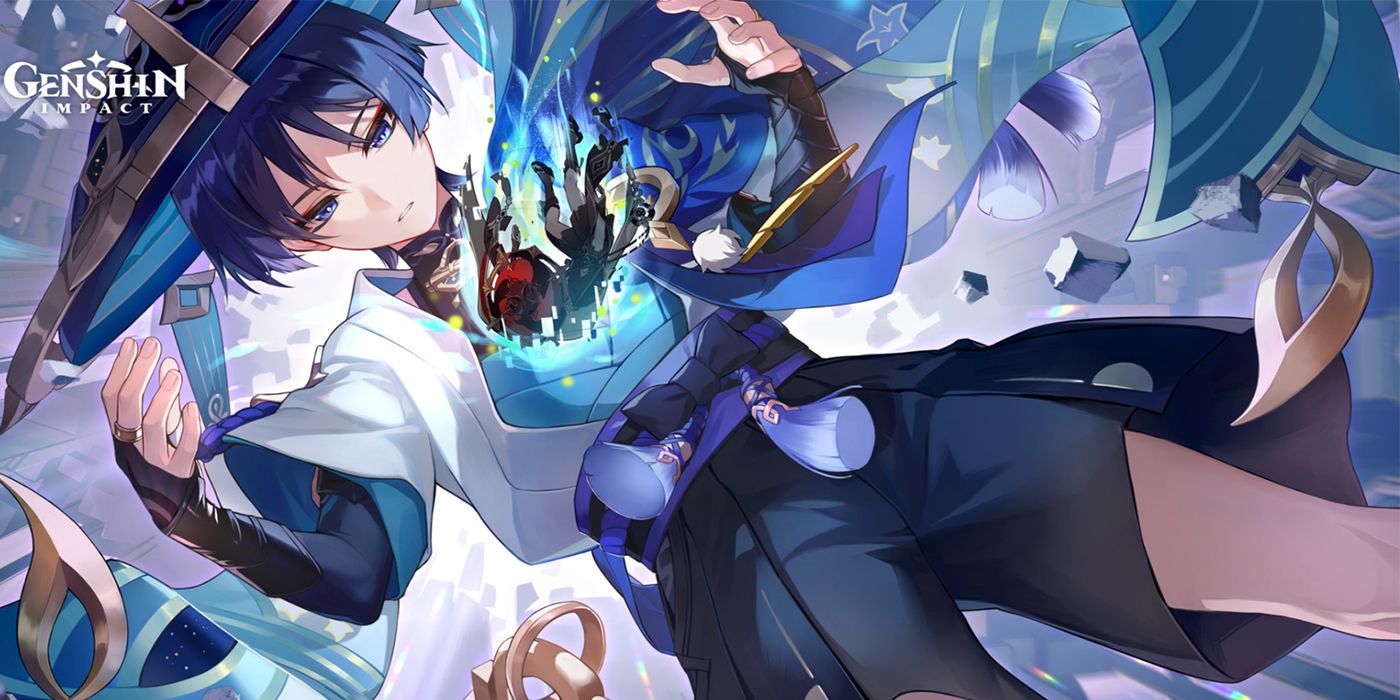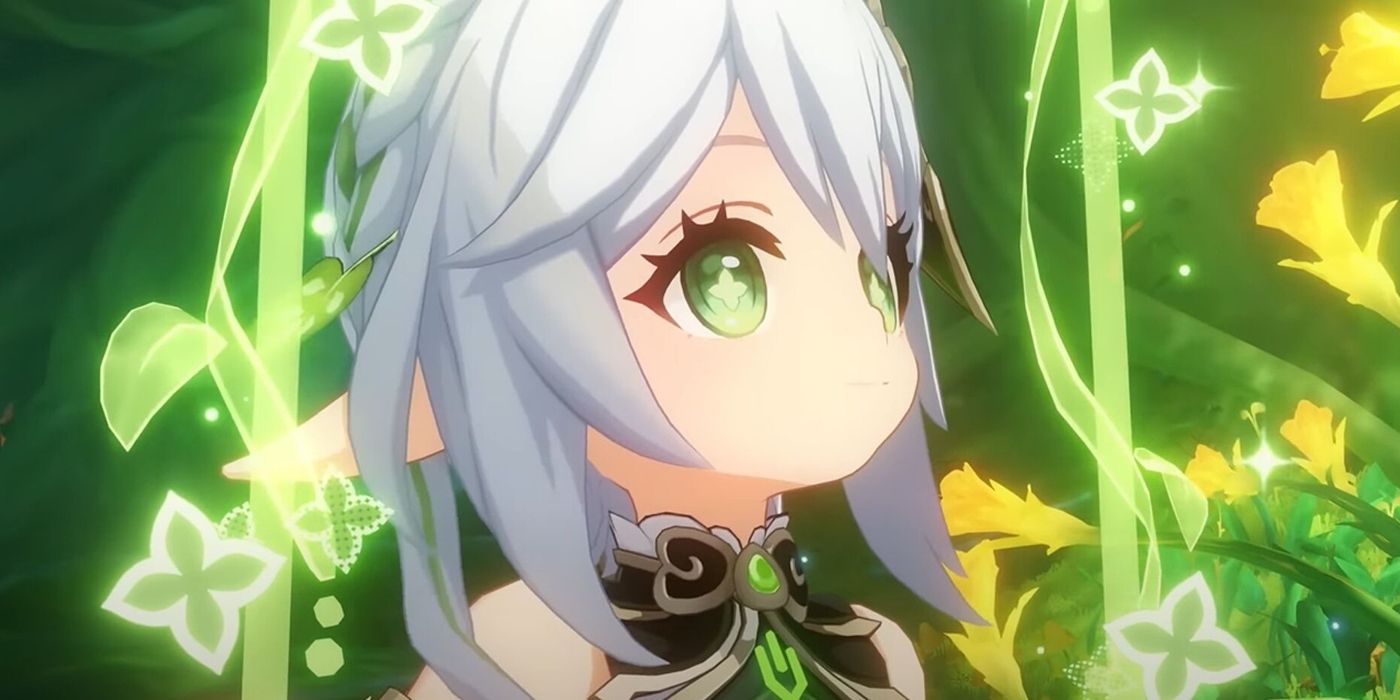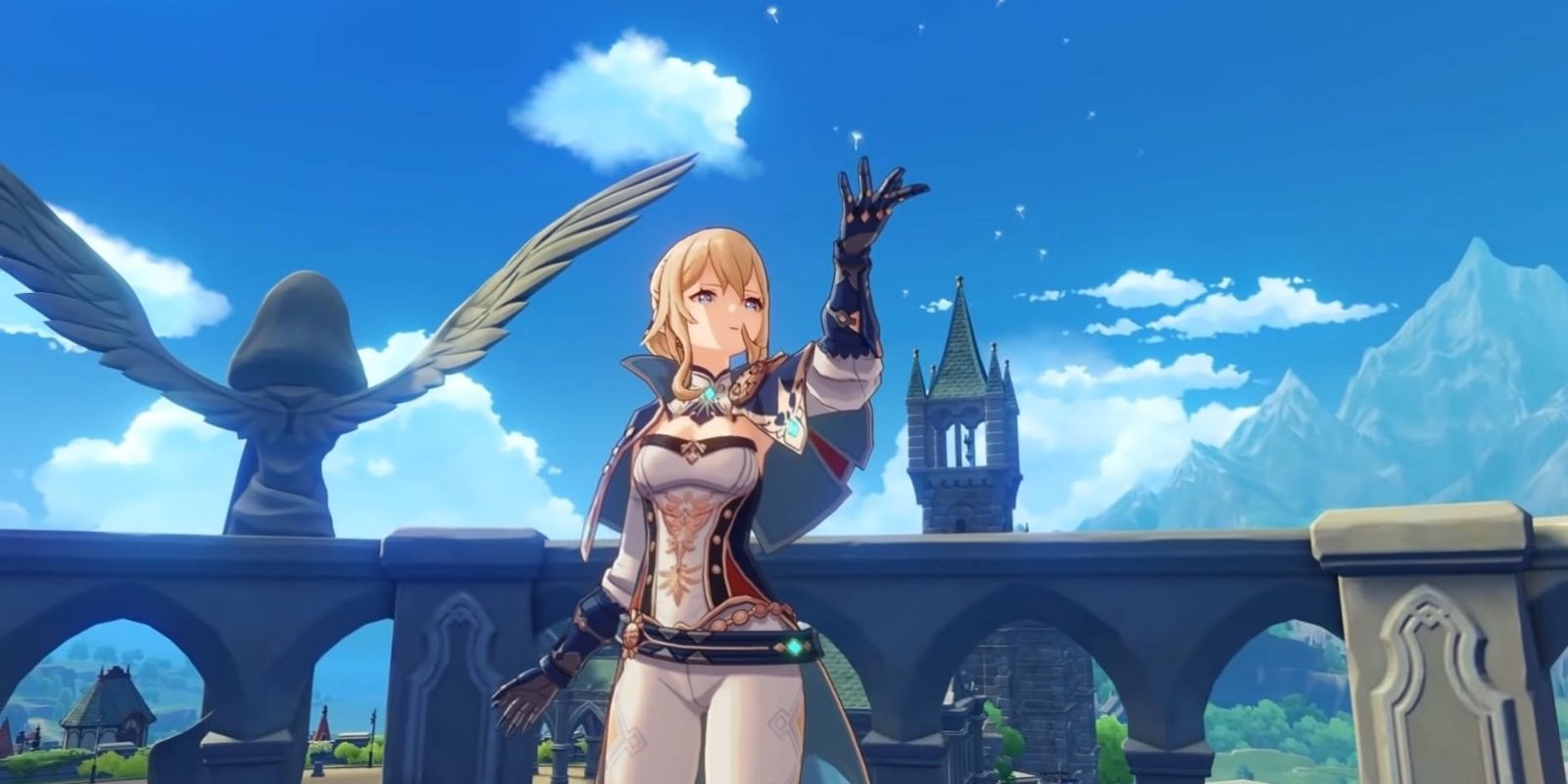Genshin Impact’s Genius Invokation TCG: How To Play

Genshin Impact’s Genius Invokation TCG is one of the major new additions to HoYoverse’s RPG in update 3.3. The new gameplay mode is inspired by various trading card games. It comes alongside the introduction of Wanderer and Faruzan as playable characters, reruns of fan-favorite heroes, a story questline interlude, and much more.
Genius Invokation TCG features Character Cards and Action Cards and puts players against multiple NPCs across Teyvat and even friends in Co-Op. Players will have a dedicated Player Level for this specific game mode, which can be increased by playing. A specific currency, called Lucky Coin, has also been added to allow players to get more cards. All these elements are similar to the Serenitea Pot housing system.
How To Unlock Genius Invokation TCG in Genshin Impact
First off, players need to unlock the Genius Invokation to actually start playing. That can be done inside The Cat’s Tail, in Mondstadt. The tavern is right between the local Adventurer’s Guild and the Good Hunter restaurant. They will then need to speak to Prince, the cat that sits on top of the main counter at Diona’s fine cocktail establishment. The minimum requirements are that they are Adventure Rank (AR) 32 or above and have completed the Archon Quest “Song of the Dragon and Freedom,” which ends the Mondstadtian main story arc.
After doing so, Travelers will be prompted with a tutorial quest that will unlock the gameplay mode. Completing them and other matches will increase the aforementioned Player Level, which will reward players for each level increase with Lucky Coin (to buy more cards), other related items, and Genshin Impact’s coveted Primogems.
Genshin Impact: Genius Invokation TCG Gameplay Rules
HoYoverse describes Genius Invokation TCG as “a tightly-paced, heart-stopping tabletop card dueling game.” The main goal is to use a deck composed of Character Cards and Action Cards to defeat all the opponents’ Character Cards. To start a match, each player will draw five cards from the shuffled deck, forming a hand. At this moment, they can change however many cards they wish from their hand and the draw pile.
All the pulled Character Cards will be placed in the Character Zone, and players will have to choose one to be the active character – this is the only one that can use skills. Accordingly, Support Cards can be placed in the Support Zone (up to four cards) and Summons can be placed in Summons Zone (also up to four cards). The Traveler’s notoriously loquacious friend Paimon and Liyue Harbor Wharf are examples of Support Cards.
Each round starts with the rolling of eight Elemental Dice, which can be rerolled one time. With the numbers set, players proceed to the Action Phase, where their moves will be made. Each skill the active character has requires a certain cost, which will be paid with an Elemental Die from the Roll Phase. Playing new cards from their hands onto the field, such as Supports and Summons, will also cost Elemental Dice, as well as changing the active character. Players can discard a card from their hands to change the Elemental Type of Die. For instance, when an Active Character card, like Genshin’s starter character Kaeya, needs a Cryo-3 Die but there aren’t any available corresponding dice, players can change a Pyro-3 into the required die by discarding a card.
During the Action Phase, players can play the card categories mentioned but also Equipment Cards, which buff Character Cards. The White Tassel card makes the equipping character deal +1 DMG. However, it can only be equipped by Polearm Characters. Event Cards, on the other hand, have an immediate effect. The Sweet Madame card, for instance, heals the target character for 1 HP. As seen with the White Tassel, some of these cards will be character or elemental exclusive. The Elemental Resonance: Sprawling Greenery requires at least two Dendro character cards in the deck, while Glorious Season can only be equipped by the traditional outfitted healer Barbara when she is set as the player’s active character.
Playing cards from their hands is considered a Fast Action, which allows players to continue their turn. Also included in this category is Elemental Tuning. On the other side are Combat Actions, which include the usage of skills, switching characters, and declaring the Round end. All of these will make the players pass their turns to their opponents.
Once both players have completed all their moves and Rounds in the Action Phase, Genius Invokation TCG will move into its End Phase. At this point, card effects will be triggered on the field following the playing order and, then, the players each draw two cards from their respective draw piles, prompting the start of the next Round. Rounds happen until one or both players emerge victorious from the match.
As is ordinary with the base gameplay, the best and worst Elemental Reactions also play a big part in Genius Invokation TCG. Players can be direct with it, such as hitting a Pyro-afflicted character with Electro to increase the DMG dealt. However, even effects that do not naturally cause DMG can inflict Elemental Reactions on specific Character Cards.
Who Are the Traveler’s Opponents in Genius Invokation TCG
Genius Invokation TCG matches in Genshin Impact are divided into two different levels of difficulty, according to HoYo: Adventure Challenges and Duels. The former is easier and helps the players understand how the gameplay mode works, while the latter is more difficult. Both reward players with Player EXP, and some even result in the acquisition of new cards, in case the challenge’s objectives are also completed.
Every week, players will be able to partake in matches against four different guests that will appear in The Cat’s Tail, which features Klee in a fan animation. This will serve as the primary method of acquiring Player EXP in Genius Invokation after defeating other NPCs around Teyvat. Asides from ordinary NPCs, like Chef Mao or Kimiya, players will be able to challenge primary characters and allies, such as Jean, Diluc, Ganyu, and Chongyun.
Of course, other players can be challenged in Co-Op mode. Through the invitation board inside The Cat’s Tail, players can connect with friends to play Genius Invokation. Once they reach Player Level 4, the matchmaking can be made with strangers, similar to the way that Genshin Impact’s Multiplayer Co-Op works. While players’ actions are not limited by time against NPCs, they are in online matches against other players.
According to HoYoverse’s post on HoYoLab, the developer will track players’ gameplay experience to make required adjustments “to ensure that the card game is well-balanced.” It is likely that new cards will also be incorporated over time. Genius Invokation TCG arrives on December 7 along with Genshin Impact’s patch 3.3.
Source: HoYoverse/HoYolab, Genshin Impact/YouTube
Share this news on your Fb,Twitter and Whatsapp
NY Press News:Latest News Headlines
NY Press News||Health||New York||USA News||Technology||World NewsTimes News Network:Latest News Headlines
Times News Network||Health||New York||USA News||Technology||World News


